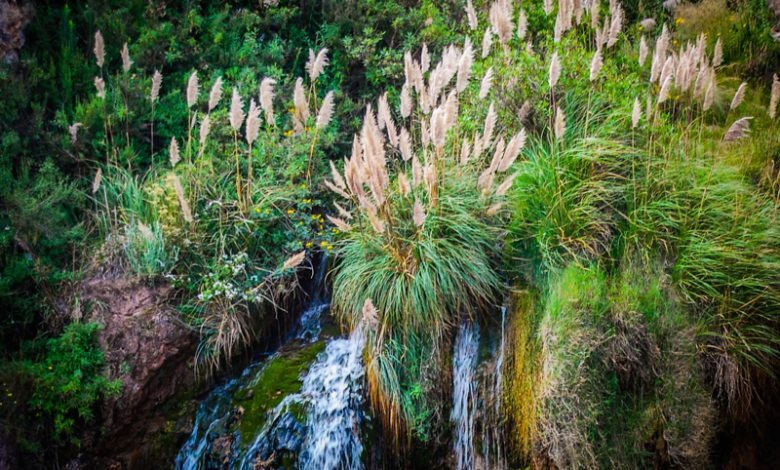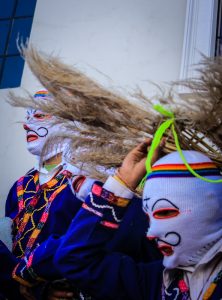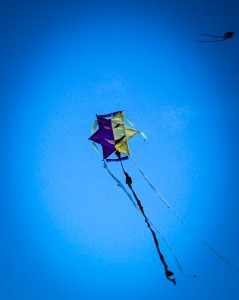Pampas Grass Soars on High in Cuzco

Fluffy topped spears rise from mounds of tough grass in the canyons by Cuzco. Known as pampas grass in English, niwa in Cuzco´s Spanish, and cortaderia seollana, it plays a traditional role in the life of the people of the city.
Among other things. the plumes of niwa are used in traditional dances as part of costumes.
To be prepared for Cuzco’s feasts, dancers go out looking for pampas grass in order to make their own headdresses, since the rental costume comes without these all important plumes. They look for the plumes that have the greatest amount of fluff so that the mass rising from their head will look bulkier. They want it to stand tall and look rich and visible from a distance.
But niwa is becoming rarer and harder to find. As a result fewer people are able to find it and they are having to substitute shredded rope for the plumes of grass. As a result, the costumes are not as traditional as they used to be.

Some people feel that the niwa, despite its tradition, is a mess. When people dance, the fluff flies off the headdress and sticks to the rest of the costume.

Nevertheless, it is good for the dances to keep their integrity in the costumes and elsewhere so that younger generations will learn to value our culture as it originally was.
Niwa is also required for one of our traditional games whose season is in full force, flying kites. People use niwa to make the frame for their kits since it is very light and its stems are straight. Even though it seems like it had cotton inside, when it dries it becomes quite hard while staying very light.
The kites that we make when we were kids are known either as H kites or Kites in the form of a cross. Without doubt the cross kite is the easiest to make. It requires niwa, a plastic bag, and a ball of twine. You tie the two pieces of niwa in the form of a cross, open up the plastic bag an stretch it over the frame, tying it to the ends of the niwa cross.
I remember how my aunt would give me and my cousins plastic bags to make our kites. Then we would compete with each other to make them. The kite that could go highest was the one named winner.

The H comet generally was made with kite paper, or some other form of light, thin and yet strong paper. We would tie the frame and then stick the paper to it tautly using a bit of flour paste.
As children we would have a lot of fun with the kites our parents made at first and then the ones we learned to make. Nowadays people just go to the market to buy pre-made kites. They have bars of plastic that are similar to the niwa even if not as environmentally friendly..
Of course it is still fun to fly a plastic kite¨to see how high it can go, fly it in different figures but there is nothing like making your own kite with niwa. You feel so much prouder when you see how well it flies.
Th children of towns close to Cuzco still tend to make their own kites. The look for a niwa stem, make the frame, stretch the covering and, voila. They run off with their kite, pulling it into the air and getting the wind, wayra, to take it in its hand and fly high. It is a joy like little else.




